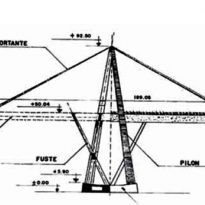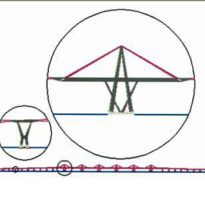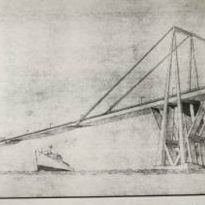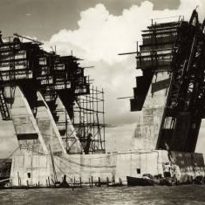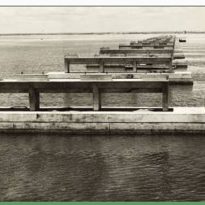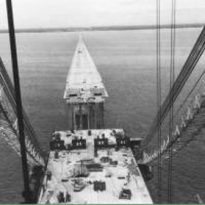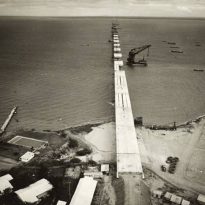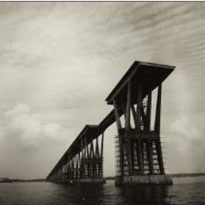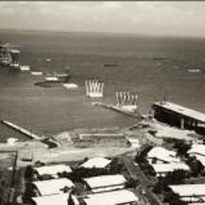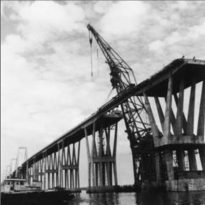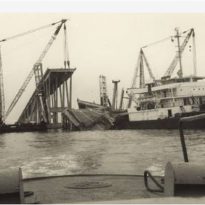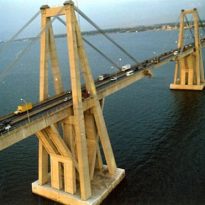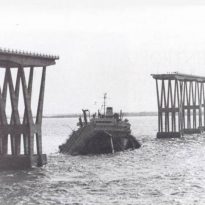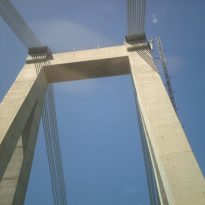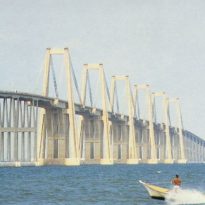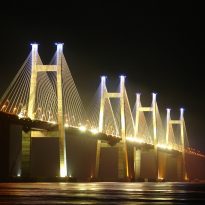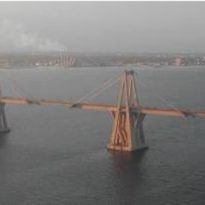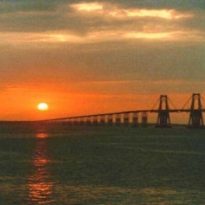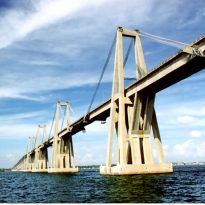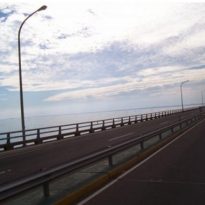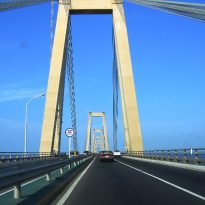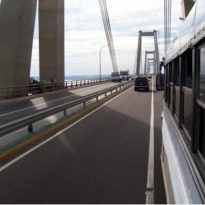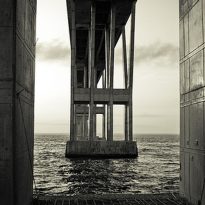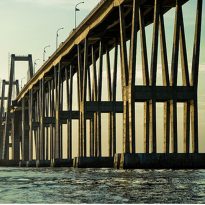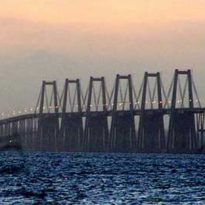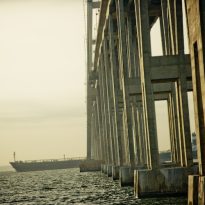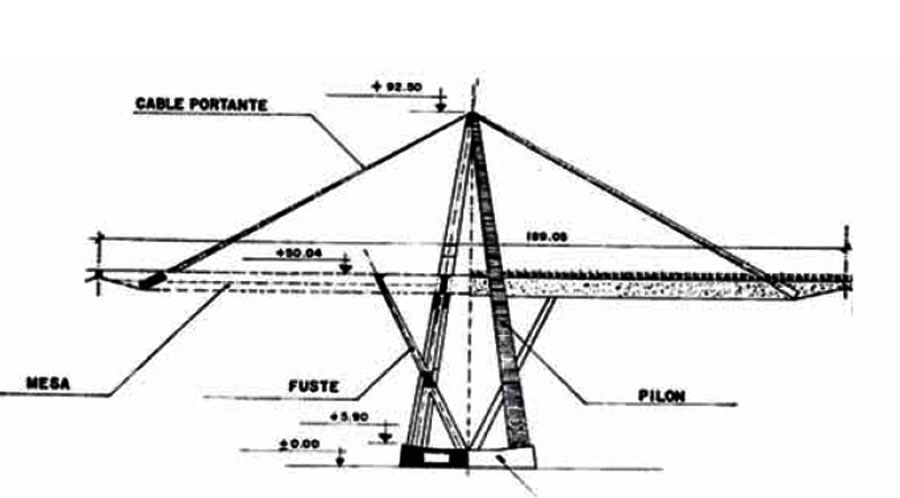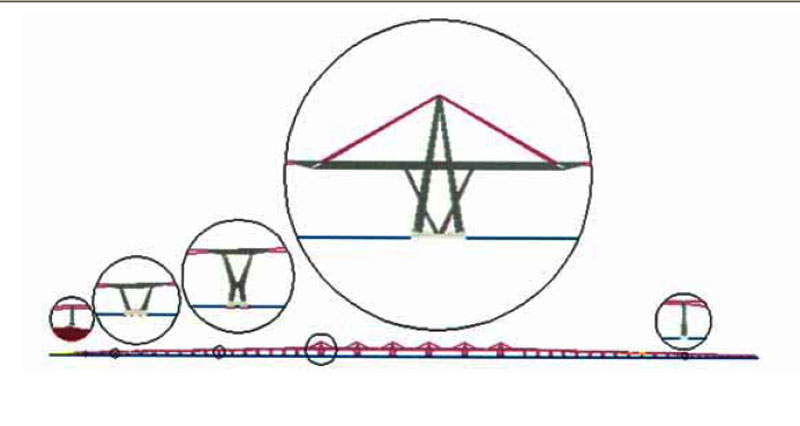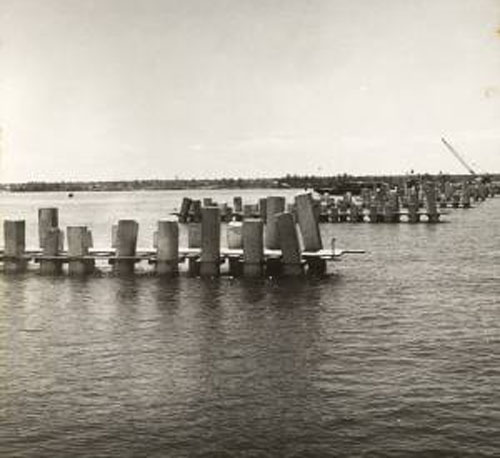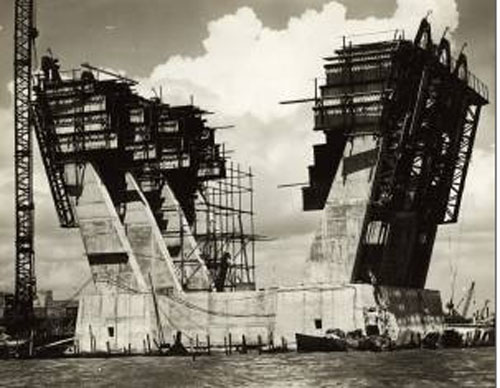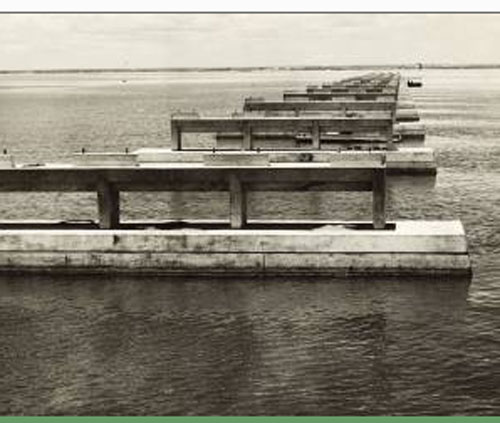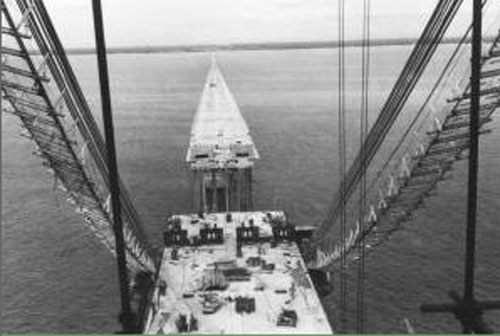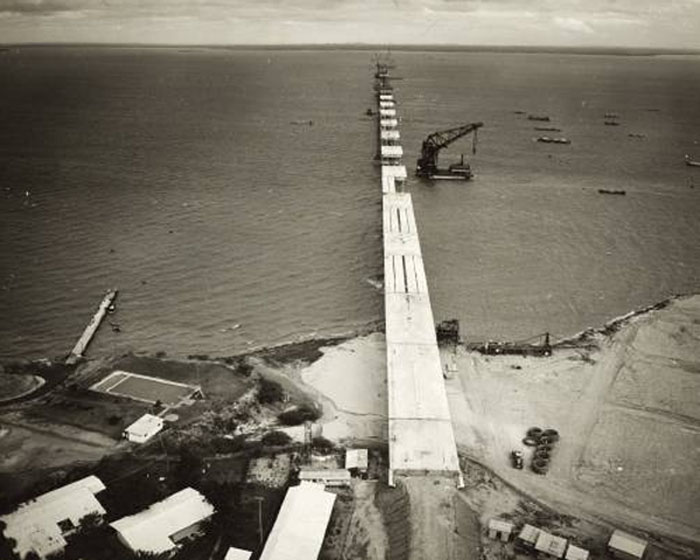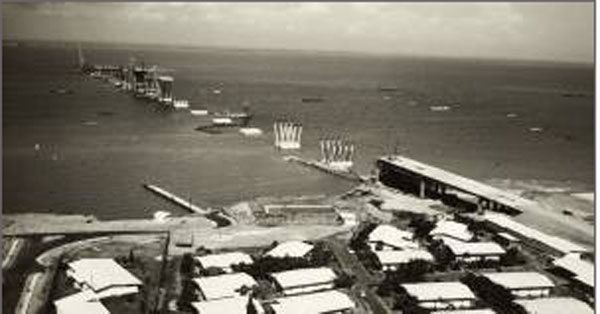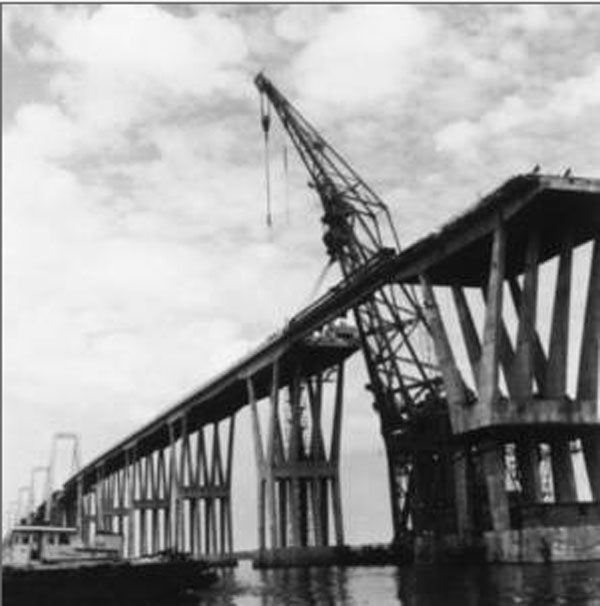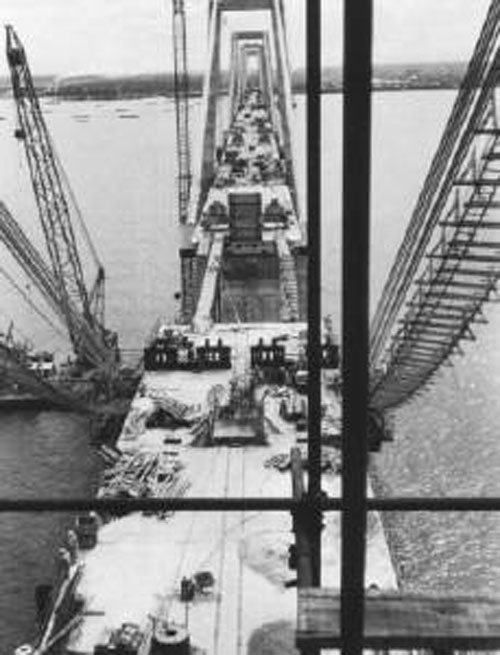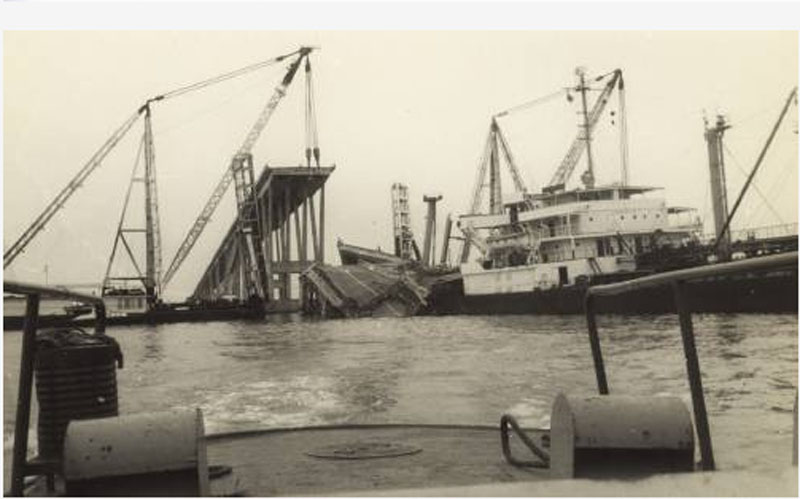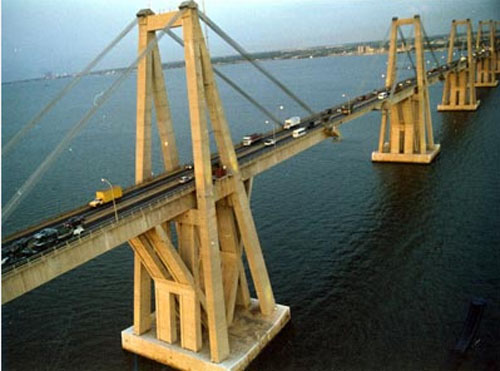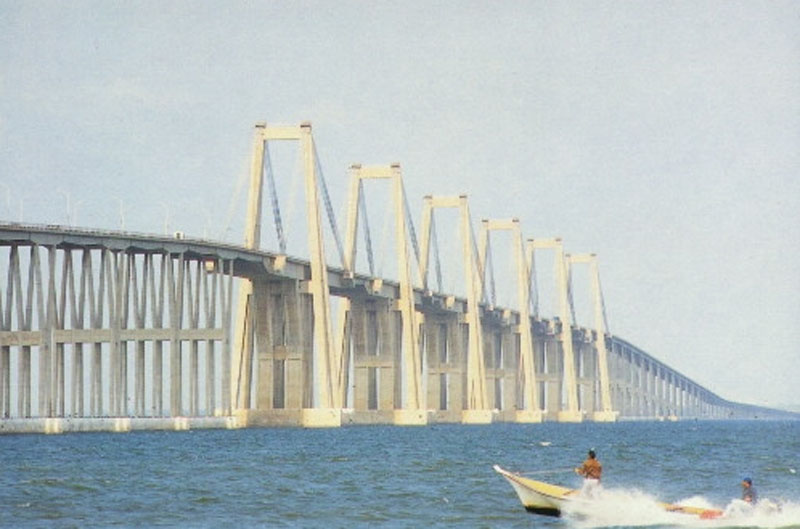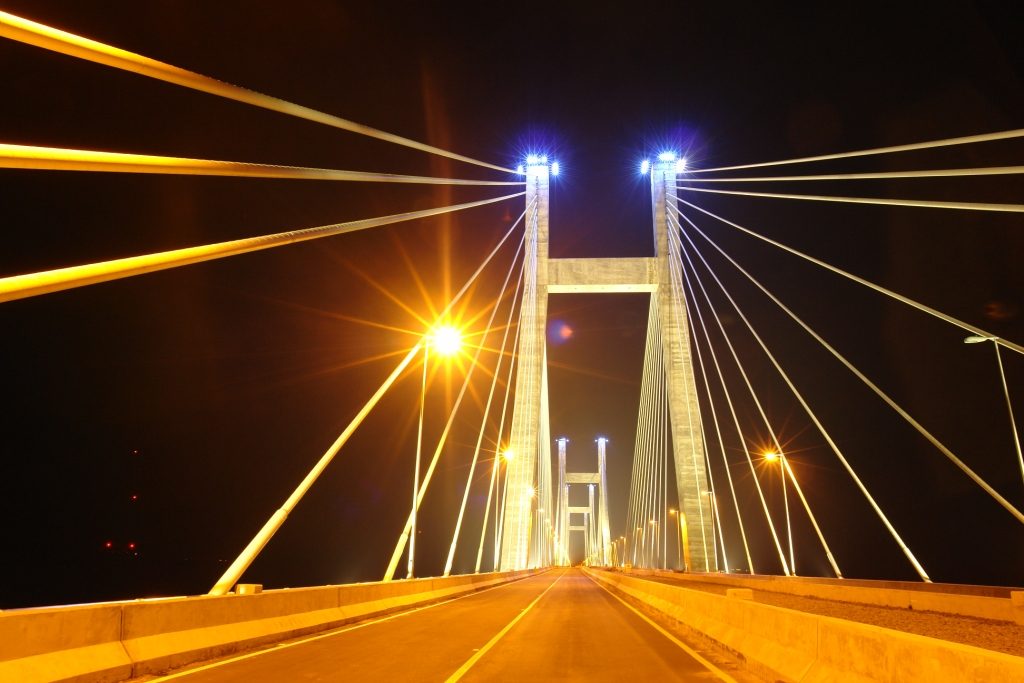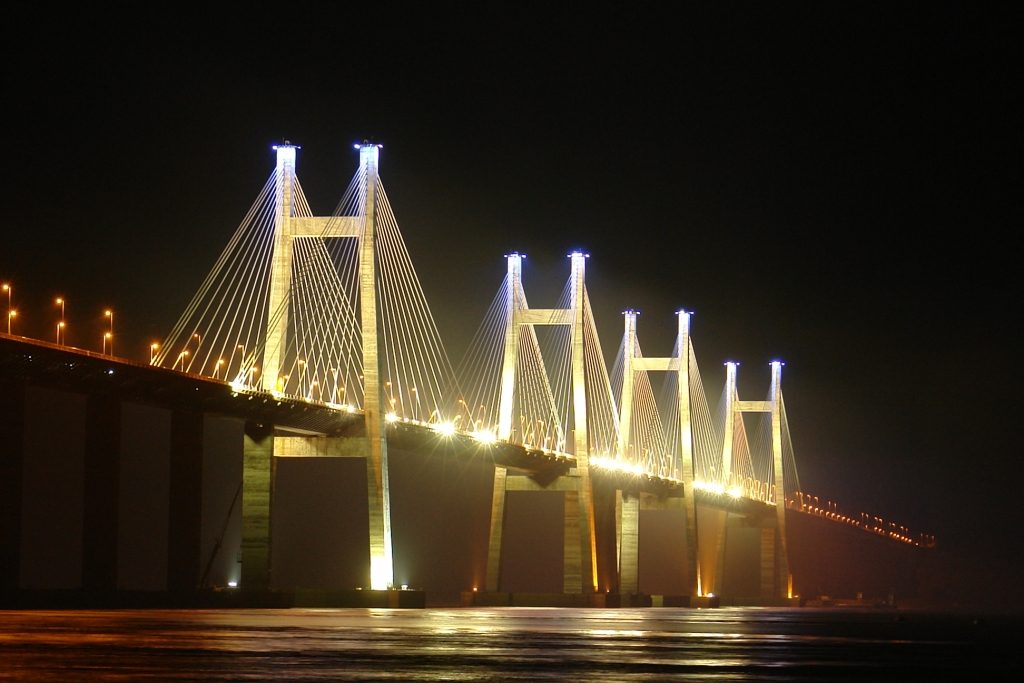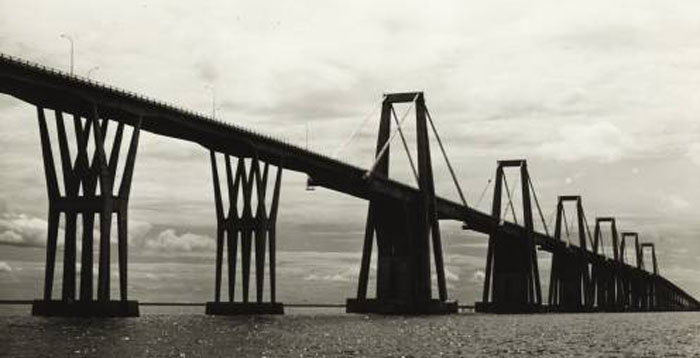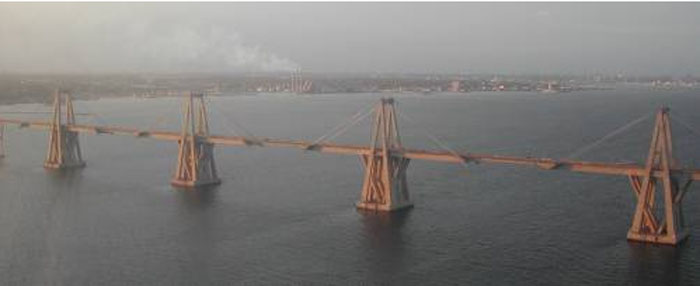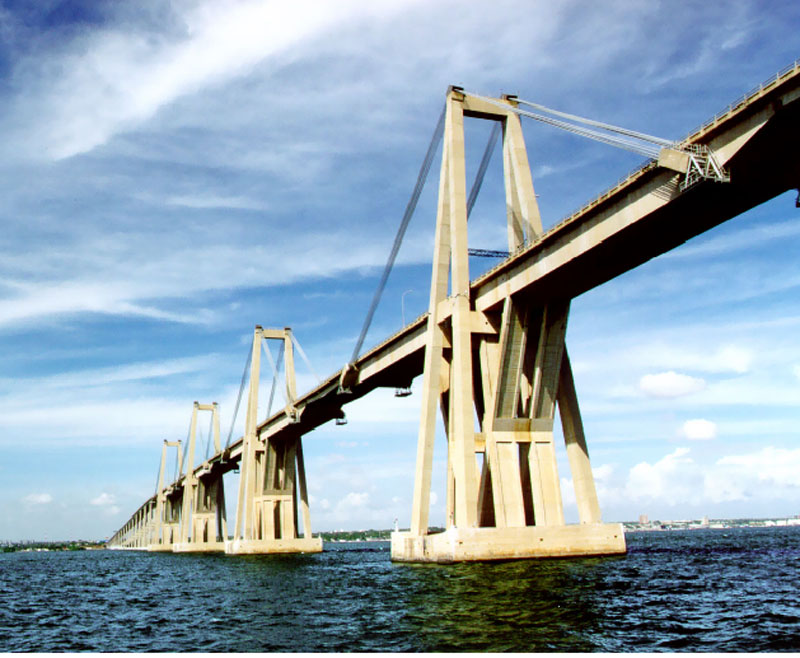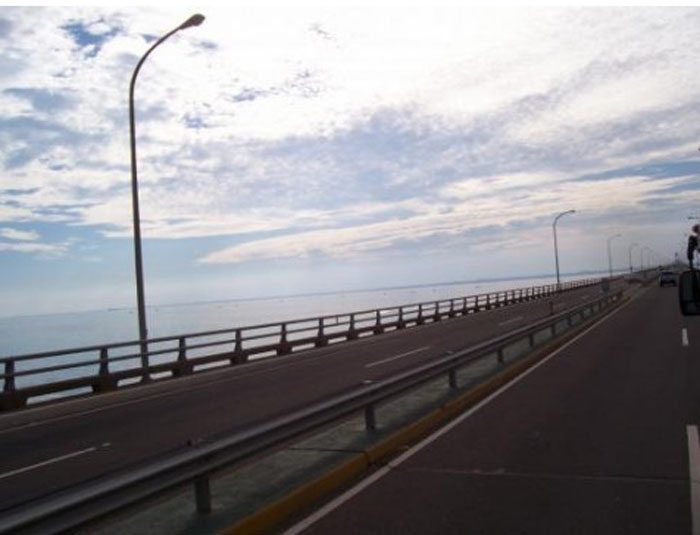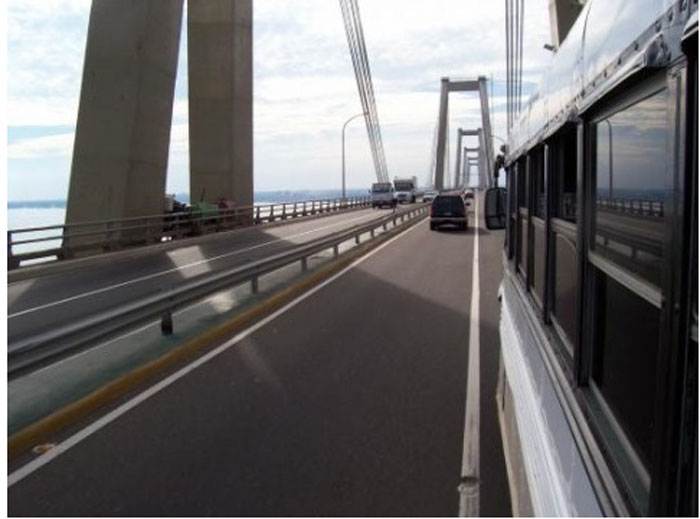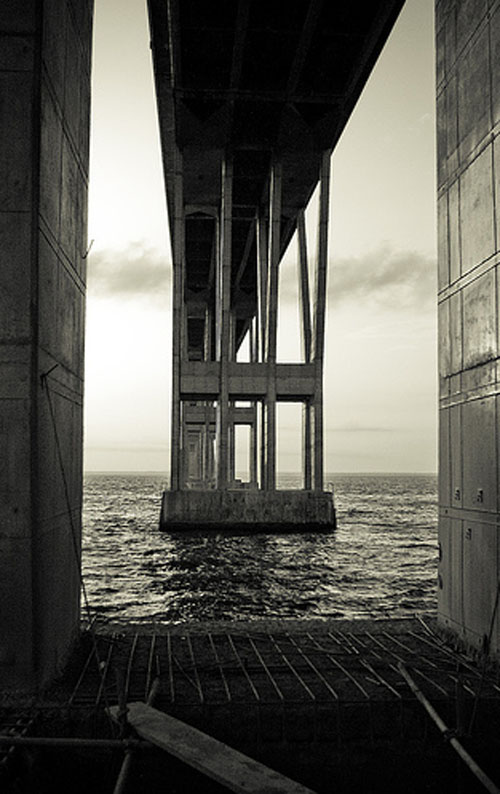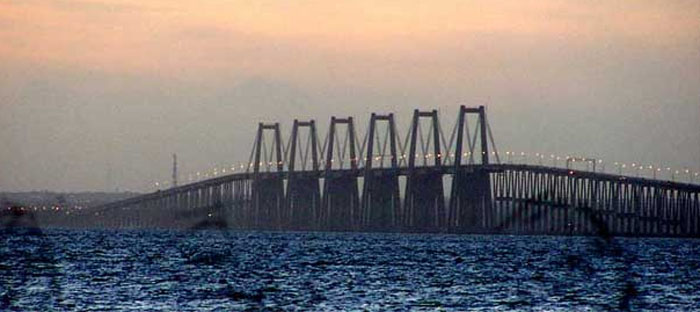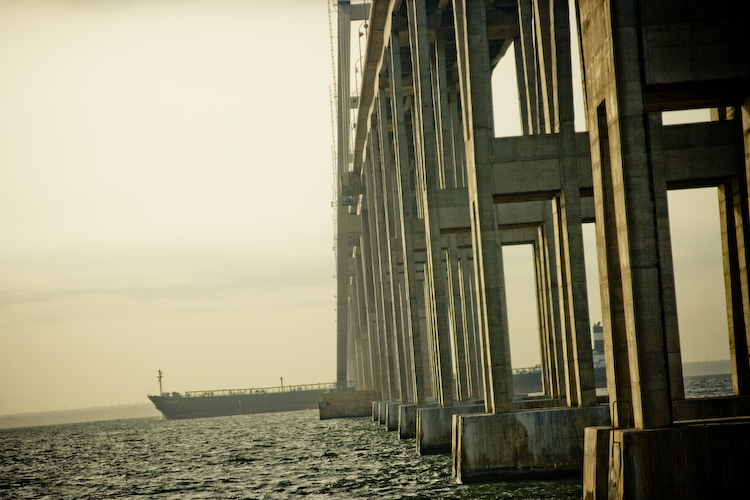General Rafael Urdaneta Bridge

Introduction
The General Rafael Urdaneta bridge is an imposing viaduct 8678 meters in length, also known as the Bridge over the lake, its construction began in the late 50s and spread over five years.
It was inaugurated on 24 August 1962 by the Venezuelan President Rómulo Betancourt, where for several years, the longest bridge of its kind in the world and one of the largest structures built of reinforced concrete.
On April 19, 1964, 5 minutes before midnight, having spent just over half of the year and apoteósica opening of the giant gray, quiet night in the area was disrupted. The super tanker Esso Maracaibo, from the Creole Petroleum Corporation, 36,000 tons displacement, carrying 262 thousand barrels of crude oil, without controls and drift as a result of an unexpected electrical fault in the command of the ship, hit the cell No. 31 of the bridge and causing the collapse of 259 meters of structure.
The Creole Petroleum Corporation, which owns the tanker, spent 8 months to rebuild the damaged part of the bridge.
Project
The initial projects for the bridge were scrapped because it was considered that a metal structure would require much maintenance, given the humid climate of the area. In addition to require little maintenance, Venezuela cement is a material less expensive than steel and maintain the aesthetic requirements of the work.
The project won the tender by the government was the proposal submitted by the Consortium pre AG and Julius Berger After signing the contract, the Italian engineer named coordinator Ricardo Morandi.
The bridge was designed by engineer Paul Venezuelan Lustgarten, who raised the alternative of using only specific pre-compressed or armed throughout the building. That proposal had great advantages: it was more resistant to wet weather in Maracaibo, thus reducing significantly the cost, meet the aesthetic demands of the work and would reduce imports of materials, among other attributes.
In April 1958, began building the formidable structure that symbolized the modernity of the final economic capital of Venezuela.
Intelligent Bridge
Subsequently to optimize their service and operations, the bridge has a fiber optic cabling and portals that host video cameras in order to exercise control over the speeds of vehicles to detect accidents, ensure the safety of users to minimize the number of suicides, among other aspects of security. Similarly, with varying signals viable and modern operations control center that facilitates the efficient maintenance, service cranes, ambulances and road safety.
Situation
The General Rafael Urdaneta Bridge crosses the narrowest part of Lake Maracaibo, in Zulia State, northwest of Venezuela, and connects the city of Maracaibo with the rest of the country. He was named in honor of General Rafael Urdaneta, Zulia hero of the independence of Venezuela.
Located in the southern Maracaibo Strait, linking the east coast of Lake Maracaibo in the west.
Structure
Built in concrete or reinforced concrete and has a length of 8678 meters. Supports an average traffic of 37 thousand vehicles daily. This bridge is the largest monument lights of Latin America and the third world.
At its core is the bridge of the bridge atirantado, their bases are anchored to the bottom of Lake Maracaibo at a depth of 60 meters.
The Bridge on the lake is divided into 135 sections, two of them 235 meters. His unusual height, 45 meters above the water, is key to strong under his body with complete freedom to browse the huge oil tankers reach these latitudes.
At the top of the structure has two lanes in each direction for road traffic.
Materials
The total cost of the project was approximately U.S. $ 97 million
- In its construction were used:
- 3,000,000 bags of 46 kilograms of cement.
- 20,000 tons of bars, steel, power and special.
- 67,483 meters of drilling piles round, with an outer di meters 1.35 meters and a carrying capacity of more than 675 tons.
- 25,668 meters of piles drive round with a di meters 91.4 centimeters and outside a bearing capacity of less than 675 tons.
- 6338 meters of piles of square drive, 50 x 50 cm, and a massive load-bearing capacity of 75 tonnes.
- In the period of greatest activity were employed 2630 workers.
- 30% of the technicians who worked on construction sites were Venezuelans.
- Equipment used in the construction of this mammoth work included:
- 1 elephant type of crane tower Texas with capacity of 250 tons.
- Jax 1 floating crane of 300 tons and 52 meters in height hook.
- 1 giraffe crane capacity of 135 tons and 75 meters in height hook.
- 1 Harold crane capacity of 60 tons and 36 meters in height hook.
- 2 floating islands with the name of Car and Cubagua.
- Dixie 1 draga two engines of 248 hp and 82, with tupo suction 10 feet.
Batteries for power, used 10 cranes towers, four of which reach heights of 100 meters.
For work lake, tugs were used 13, 19 boats, 50 barges and a considerable number of small boats with outboard motors.
The excavations were required of such magnitude that the earth had been able to fill the tunnels of the Caracas-La Guaira highway
